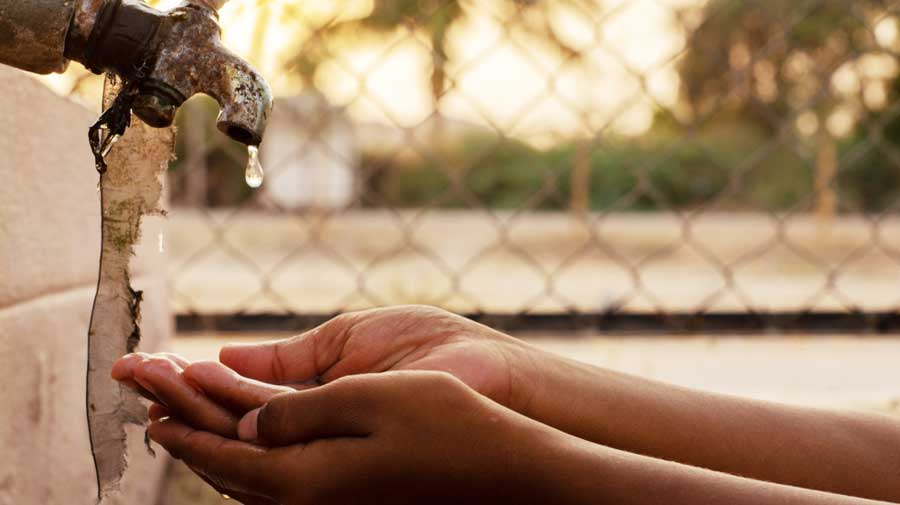Over the past few days, several households in the city received less than usual water.
This happened because the water treatment plants of the Kolkata Municipal Corporation (KMC) were forced to cut down on their production because of excess sludge in the Hooghly water. More sludge meant more time for treatment and the production was hit.
During the water crisis, The Telegraph tried to find out how water from the Hooghly makes it to the tap in our homes.
Intake of raw water
The raw water of the Hooghly is pumped up from the river and taken into the five water treatment plants of the KMC — Palta, Dhapa, Garden Reach, Watgunge and Jorabagan. While some plants like the one at Palta is located right near the river bank, some like the one at Dhapa is located far away where the water reaches through underground pipes.
The settling tank
The first stage in the treatment process is to put the raw water into a settling tank. The impurities that are of bigger size settle down at the bottom of the tank.
“The cleaner water in the upper part of the tank crosses over a wall and enters into another container,” said an engineer of the KMC’s water supply department. The wall, called baffle wall, is kept in the tank with the purpose that only the clean water from above goes to the next stage after breaching the top of the wall. The water at the bottom remains within the enclosed area and is taken out later.
Clariflocculation
This second stage of treatment helps to separate the impurities in water that may have escaped the settling tank.
In this stage coagulants like alum are added to the water. The water is run through a clariflocculator, a mechanical unit where remaining finer particles come together to form flocs. In the process, they become heavy and drop below.
The clean water from above is now sent to a filter bed, the next stage of treatment.
The filter bed
The water, which now consists of even fewer solid particles, is passed through a filter bed consisting of gravels and sand. “After passing these three stages, the water is clean enough for drinking,” said a KMC engineer.
The water is collected in a storage tank for distribution.
Chlorination
In this stage, chlorine is mixed with the water as it kills harmful microbes that may be present in the water. A KMC engineer said chlorine was added to the water near the point where it entered the distribution pipes.
Distribution
The main lines from the treatment plants take the water to booster pumping stations located across the city. In booster stations, the water is given an extra thrust by using pumps so that it reaches the farthest house under its area.
